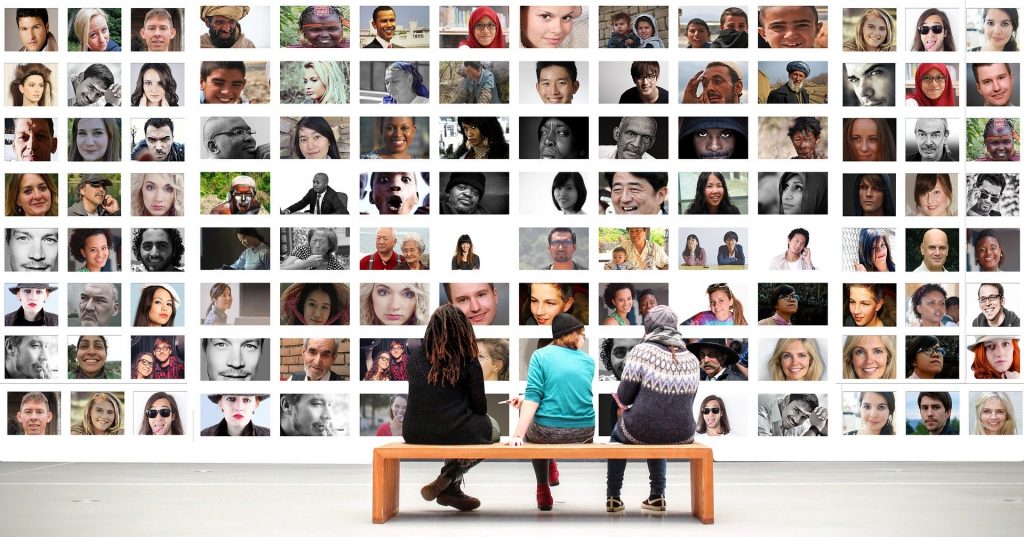Teaching Children to Appreciate Diversity
The gymnasium was fairly quiet, for once. In my two weeks as a before-and-after-school daycare director in a Detroit public school, I had found that mornings with paper and crayons were the most peaceful. The youngest child of the group, a cheerful kindergartener, scooted next to me as I filled out the attendance record. Out of the corner of my eye, I could see her staring at me, head tipped to one side. I smiled at her. Suddenly, her eyes lit up like she had figured something out.
“You’re White!” she exclaimed with a grin.
I laughed. I guess the blonde hair is a dead giveaway.
The hum of quiet conversation died, and someone gasped. Twenty-some pairs of wide eyes looked nervously from me to the little girl.
“You can’t say that! It’s mean!” a second-grader blurted out.
My experience in the Detroit school wasn’t the first time race-related topics had come up in this type of setting. I’ve had a White preschooler ask me why the little boy in a Martin Luther King, Jr. picture book looked sad. Several Black kids in Detroit asked to brush my hair, because it felt different than their own. A teen in the Caribbean told me I’m “Black on the inside.” My favorite? A seven-year-old once informed me my green eyes look like a cat’s.
It’s important to know how to talk about ethnicity with kids, because they are curious, and they speak their minds. I can almost guarantee this topic will come up if you spend a lot of time around kids. I think we can all agree that we don’t want kids loudly announcing other people’s ethnicities. Even if they’re five. But even more than I’d like to avoid embarrassment, I want to avoid making kids in my care think the idea of ethnic variety is bad or scary. To achieve this, I’ve found several activities that teach young kids to appreciate — not fear — the colors in the world around us.

Diversity in art
The most obvious way to teach little ones about diversity is to simply talk about it. For adults, discussing the variations in skin tone is awkward. It’s not awkward for small kids. After all, it’s not uncomfortable to talk about hair color or eye color! The best way I’ve found to approach this is to print up some coloring pages featuring people and start coloring in them in with a variety of skin tones.
Once, I was doing this with a preschooler in a mostly White school. She watched with interest as I colored a princess with dark skin and hair.
“Why did you make her brown?” she asked.
“Because lots of people have brown skin. Right?”
“Oh, yeah.” She thought about it for a minute.
Then she grabbed a blue crayon and colored her princess like a Smurf. So I’m still not sure if that lesson sunk in or not, but hey, I tried.
With toddlers, you can do this on a simpler level. My two-year-old recently started drawing people. Today, I dumped out a whole box of crayons and showed him every shade of brown. Some people have skin this color. And some people have skin this color. And some people have skin this color. What color is your skin? What color are your eyes? What about Mama’s?
Diversity in play
From browsing through Instagram and talking with other moms, it seems like toy diversity is a hot topic. Which is awesome! Kids love toys that look like them — but they also like toys that look like other kids, too. Getting on the floor and playing with these toys is a great way to model diversity in friendships, whether your Barbies are shopping or your roadwork crew members are sharing tractors. You don’t even have to point out what you’re doing. While you’re at it, don’t forget to include toys that represent diversity in abilities, too.


Diversity in literature
Not too long ago, it was tough to find many picture books with kids of color as main characters. But this is progressing, slowly but surely. Take a look at new releases and you’re more likely to find books that celebrate diversity. For example, we enjoy the “Baby Loves Science” series, a set of STEM board books that feature cute babies of all colors. I like having a mix of books that focus on culture (for example, books that talk about the daily life of kids in another country) as well as books that are about other topics that just happen to have diverse characters. “Hello” and “Babybug” magazines are all-around excellent.
It’s a good idea to screen for books that portray stereotypes of dress or lifestyle. Even if it’s subtle and not intentionally disrespectful. Sadly, I’ve had to weed out some classics published in decades past because of this.
Diversity in experience
Last but not least, the best way to teach kids to appreciate diversity is to expose them to it. There are many ways to do this in your hometown — whether that means attending activities that appeal to people outside your subculture, going to events that attract people of all types, or enrolling your kids in an international school.
However, the best way to learn about diversity is to travel! This way, you’ll expose your kids to diversity of appearance, of course, but also diversity of speech, lifestyle, thought, taste, and so much more! It’s harder to think of people as “other” when you’ve spent quality time around them and interacted with them.
Depending on where you live, you may not even have to travel far to accomplish this. For Arizonans like myself, there are dozens of cultures and subcultures within a day’s drive — including the Navajo Nation and Mexico.

The best way to travel with the intent of exploring diversity is to ditch the touristy places. Sometimes, tourist attractions bring people from all over the world — the Grand Canyon or Disneyland, for example.
But most tourist attractions I’ve seen are engineered to appeal to specific groups of people, whether that be outdoor enthusiasts, families, or just Americans in general. If I’m not intentional about my travel plans, I tend to end up spending time around a lot of people like me!
It takes a little more work to find ways to interact with residents of your destination. One great way to do this is to find where the locals are volunteering. This way, you’ll be working alongside them, and doing it their way! Plus, it never hurts to get kids involved in community service. If your kids are too young for this, you can always find a playground, beach, or wildlife area that tends to attract more residents than tourists. Chances are, they’ll make friends within minutes of arrival!




How do we encourage young kids to be respectful and kind to everyone? Teach them to see diversity positively. Celebrate it! If we can demystify race for small children in our care, we’re setting them up to tackle more complex racial topics down the road, and ultimately, grow up to be accepting and culturally competent adults.

Book Your Travel to ANY Destination
Use the interactive map below to search, compare and book hotels & rentals at the best prices that are sourced from a variety of platforms including Booking.com, Hotels.com, Expedia, Vrbo, and more. Search for ANY destination by clicking in the upper left corner of this map. You can also use the filter to fine-tune your search, and find restaurants, attractions, and more!

Breana Johnson is an American expat living on the Caribbean Island of Sint Maarten. She surfs, snorkels, and spearfishes when she’s not tutoring local kids or writing. If she could have any job title in the world, it would be Professional Hummus Taste Tester. For now, she’s settling for freelance travel writer. You can catch up on Breana’s adventures at her blog, www.3rdCultureWife.com. PODCAST FEATURE Listen to Breana on St. Maarten Travels that Transformed Lives


